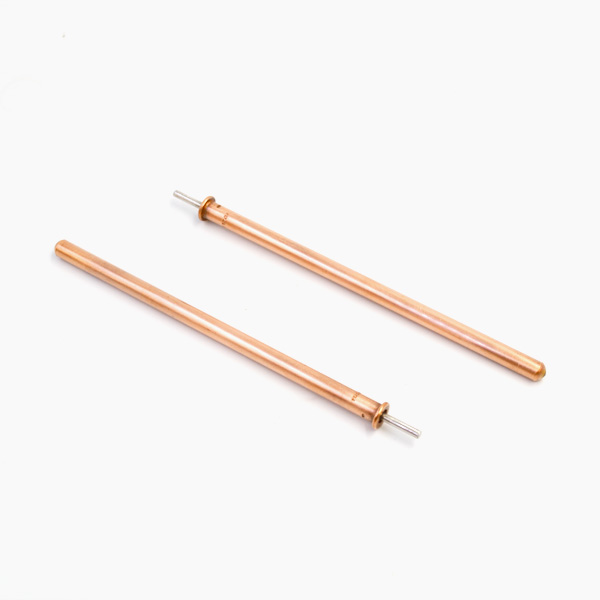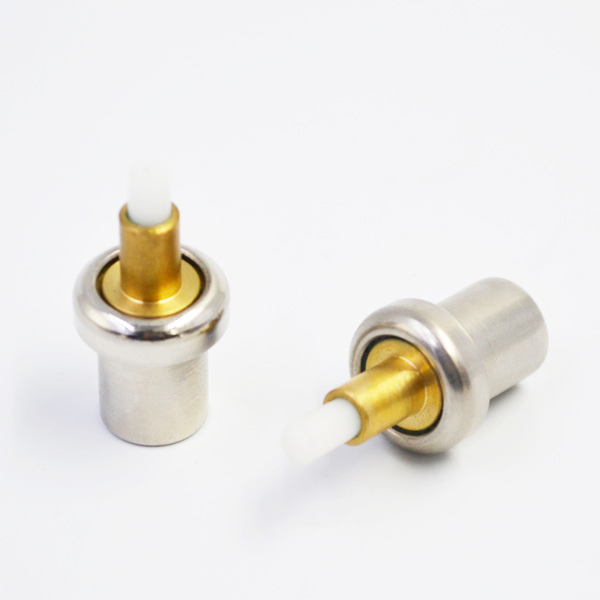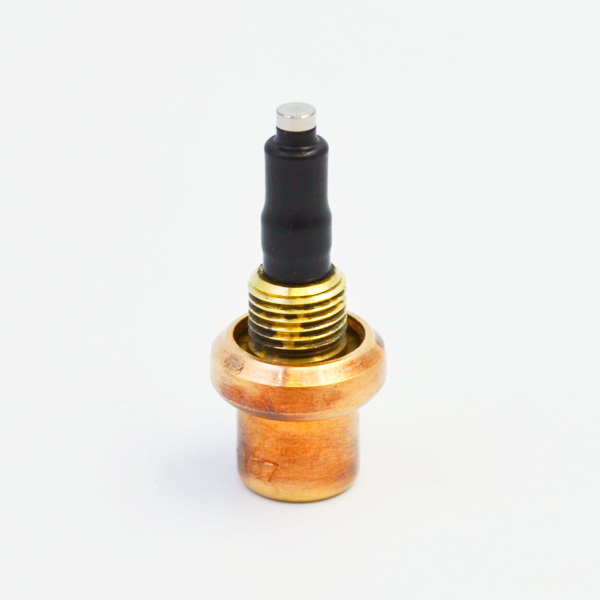With the widespread use of BLDCM, the competition of controller market is becoming more and more fierce, and the contradiction between excellent performance and low cost is becoming increasingly prominent. In the hardware part, 79F9211 MCU is used as the controller, IGBT driving circuit and other auxiliary circuits are designed, and a three-phase brushless DC motor control system is completed. In the double closed-loop speed regulation link, the improved integral separation PI algorithm is used to optimize the digital filtering algorithm of current acquisition, which meets the dynamic and static performance requirements of BLDCM control and reduces the control cost. Finally, the feasibility of the system is verified by experiments. Brushless DC Motors (BLDCM) have the characteristics of high efficiency, large torque and small volume. At present, BLDCM has been widely used in electric vehicles, aerospace, household appliances and industrial control fields. With the progress of technology, BLDCM is developing towards miniaturization, full digital controller, new structure and advanced control. Nowadays, the market is becoming more and more competitive. In addition to the expectation that the controller has better static and dynamic performance, it also puts forward higher requirements for control cost. Early controllers mostly used dedicated processors, which was not conducive to expansion and secondary development. With the development of electronic technology, the emergence of DSP and integrated power chip provides a good platform for motion control, but the cost increases accordingly.
To solve the above problems, a reliable and low-cost scheme is adopted to realize the all-digital brushless DC motor system. The hardware of BLDCM control system is composed of microprocessor, power drive circuit, current detection circuit, Hall signal input circuit, speed regulation circuit, etc. As shown in Fig. 1, the external speed control signal is converted by A/D to provide speed for the control system. According to the control strategy, the control system completes the electronic commutation and changes the duty cycle of PWM. The power driving circuit completes the IGBT regulation, and changes the speed by changing the stator winding voltage of the motor.
The current and speed values required by the double closed-loop speed control system are obtained by sampling the bus current and Hall signal of the motor. UPD79F9211 is a 16-bit microcontroller developed by Risa. It has high performance and is very suitable for BLDCM control. Its cost is slightly lower than the most common 8-bit microcontroller. The Multifunctional Timer Array Unit (TAUS) of Mu PD79F9211 can provide six PWM outputs with dead time at the maximum resolution of 40 MHz; there are many hardware-triggered A/D conversion modes, which can avoid the commutation time of the motor accurately and improve the accuracy of sampling current; the built-in operational circuit simplifies the circuit design and improves the anti-interference ability; the built-in multiplier/divider improves the operation performance, and in addition, the multi-work. The timer is equipped with a dual-channel comparator for automatic fault detection and over-current protection. Six triangular-wave PWM signals are generated from the combined output of seven channels of Mu PD79F9211. As shown in Figure 2, Channel 0 is the main channel, counting downwards from the period value, and its two cycles constitute a 50s PWM carrier cycle. The other is slave channel, where channel 2,4,6 runs in up-down counting mode and modulates duty cycle; channel 3,5,7 works in single down counting mode to control dead time. In order to reduce switching loss, only the upper arm is modulated for PWM chopper while the lower arm is controlled by level. External interrupt is set as upper and lower edge trigger mode. When Hall signal arrives, it enters external interrupt. In interrupt service program, Timer09 records the count pulse value between two adjacent Hall events, and calculates the interval time. According to the current Hall sequence table, the corresponding output sequence is generated as shown in Figure 3. The lower arm of the bridge is turned off at high level and turned on at low level. 310 V bus voltage source. As shown in Fig. 4, the varistor R1 protects the circuit from over-voltage.

Two LC low-pass filters are used to suppress EMI signals. After rectification, the soft-start circuit composed of relays and resistors charges the filter capacitor and suppresses surge current.
IGBT drive voltage. IGBT is a voltage-controlled device. Its gate driving voltage is generally about 15 V. A voltage-stabilized power supply is composed of a switching power supply chip VIPer12A with a wide input voltage of 85-265 VAC, as shown in Fig. 5. The difference of output voltage after 15V regulator D6 is fed back to the FB terminal, and compared with the internal reference voltage, the internal switching time of VIPer12A is changed to control the output voltage and achieve the purpose of stabilization. The 5V power supply required by MCU, Hall circuit, speed regulating circuit and so on can be generated by 15 V voltage regulated by three-terminal voltage regulator chip. The analog signals of bus current and speed regulation of brushless motor need to be converted by A/D. The precision of reference voltage largely determines the sampling accuracy. Therefore, besides the analog and digital separation, the precise A/D reference source should also be set up.
As shown in Fig. 5, the reference terminal potential of the reference voltage integrated chip TL43 1 is 2.5 V, the precision resistance R7 and the resistance value R79 are 1 k_, and the VREF is 2.5 [R7 R77R7] = 5 V. The Hall signal produced by BLDCM firstly increases the output level by pull-up resistance. On the one hand, if the Hall interface is disconnected, the input will be wrong Hall sequence 111, which will give a fault alarm. On the other hand, it can improve the noise tolerance and reduce the impact caused by the interference source. The signal is filtered out by low-pass filter circuit and shaped by Smith flip-flop U5. It is fed into external interrupt pins INT4-6. As shown in Figure 6. In order to acquire Hall pulse jump in real time, the priority of interruption should be set to be high, and the interruption mode should be set to enable both rising and falling edges. At present, there are many mature integrated power driver chips available in the market, but the price is high. Fig. 7 shows a feasible IGBT driver scheme. The IGBT-GIB10B60KD1 based on the non-penetrating technology of N-type substrates is adopted. The rated voltage is 600 V, the rated current is 10 A, and it can withstand the instantaneous pulse current of 32 A. It has the conductivity of 10 micros. When UH and UL are low level, Q10 of high frequency low power transistor is turned off, there is no current in R14, Q4 is turned off because of losing bias voltage, and then D12 of diode is cut off immediately.

The gate voltage will turn on Q7, and the upper bridge arm will turn off quickly because of the rapid release of gate charge.
At the same time, UL is low level, Q22 is cut off, Q19 is turned on, and the terminal voltage of R26 makes Q13 saturated and the driving voltage will turn on after gate resistance R29. Driving resistance R29 limits the [didt] or [dudt] of IGBT to protect IGBT. The lower bridge arm is turned on, U is pulled down to the ground, 15V is charged by bootstrap diode D11 to bootstrap capacitor C18; conversely, when UH and UL are at high level, Q10 is turned on, and the voltage drop on R14 makes Q4 turn on, while the voltage drop on D12 and R11 makes Q7 emission junction reverse bias, and the discharge channel of IGBT is blocked. Because Q4 is turned on, the driving voltage is turned on by D12 and R11, the IGBT of upper bridge arm is turned on, the U terminal appears high potential, and the cathode potential of D11 rises, resulting in D11 cut off, and the bootstrap capacitor replaces 15V to complete gate drive.
At the same time, UL is high level, because Q19 base voltage is also 5 V, Q19 is off, R26 has no current through, Q13 is off because of unbiased voltage, the driving voltage of IGBT is off. At the same time, Q22 is turned on and the discharge channel established between the IGBT gate and the ground of the lower bridge is switched off rapidly. Therefore, the upper arm is open and the lower arm is cut off. The corresponding relationship in Table 1 is obtained, and the other two phases are similar. The R8 and R9 equivalent power precision resistors in Figure 7 constitute the bus current detection circuit with equivalent resistance of 50 m_. After eliminating high frequency interference, the low-pass filter circuit composed of R4 and C7 is connected to on-chip programmable gain analog input CMP0P. By programming the OAM register, the amplification factor is set 6 times, and the output signal is used as the analog input of the A/D converter and the front end of the built-in comparator.
The comparison results can be used as over-current protection to turn off all modulation signals. The traditional PID control algorithm is simple and easy to implement, but due to the shortcoming of high-frequency interference signal amplification at the same time in differential, the PI controller commonly used in motor control constitutes a double closed-loop system [3?4]. Where: [Δ U (k)] is the incremental PI regulation output; E (k) is the deviation, that is, the difference between the given value and the measured value; E (k-1) is the deviation of the previous time. In the double closed-loop speed control system, the current loop has fast dynamic response during acceleration and deceleration, and can improve the impact of bus voltage fluctuation. The classical PI can basically meet the requirements; if the speed is stable, it is mainly completed by the speed loop. However, a single PI parameter can not meet the requirements of dynamic response and steady-state performance at the same time.
The reason is that the deviation e(k) of motor starting is very large and the output of speed loop is saturated.

That is to say, the given current loop is unchanged, and the speed loop is equivalent to an open loop. The system becomes a current regulating system under constant current control [5]. In order to speed up the response, a larger KP is needed, while a smaller KI is needed to prevent integral saturation. In order to improve the steady-state accuracy and avoid oscillation, KP and KI are expected to be larger. For this reason, the PI algorithm of improved integral separation is adopted in the velocity loop, as shown in Fig. 8. The deviation thresholds B, M, S and VS are taken, i.e. the corresponding deviations are large, medium, small and small. C is the maximum allowable output current A/D value of the motor. [k = C, EK > Blambda = 0, M when [ek > B], the deviation is large, [u (k) = C], the current is given unchanged, single closed-loop constant current regulation allows the motor to output the maximum allowable current to speed up the starting process; when [M] is convenient for PI parameter adjustment, the MCU serial port is connected with the Bluetooth module, through which the Bluetooth communication with the PC terminal can be carried out through debugging software to modify the parameters and accelerate the setting process. Whether BLDCM control can achieve better results depends on the algorithm itself and the accuracy of measurement parameters. In BLDCM control, speed, thermostatic element current and speed control signals are the three main factors affecting closed-loop control. If the measurement error is large, the control accuracy will be affected. After low-pass filtering and A/D conversion, the analog signal of speed regulation can be filtered by median method to achieve better results. The following is mainly about the measurement of speed and current.
Speed measurement. In Hall signal interruption, it is the most commonly used method to measure the speed while controlling the phase sequence according to the output of three-way Hall sequence lookup table. However, due to the accuracy of the installation of Hall elements, the measurement error is very large when the rotor rotates at high speed. The polar logarithm of the BLDCM used in the experiment is 3, and the rotor generates a Hall signal every 20 degrees and 18 Hall signals every turn. For the same motor, to improve the accuracy of speed measurement can be considered from two perspectives: one is to increase the frequency of counting pulse, the higher the frequency, the more the counting between adjacent Hall sequences and the smaller the error; the other is to adopt appropriate software filtering algorithm. Simple average filtering affects the real-time performance of speed, and the recursive average filtering algorithm is a better choice. Current detection. There are many noise signals in the current sampling signal of the motor. The IGBT switching noise and the electromagnetic noise of the circuit during commutation bring great troubles to the current detection. In addition to wiring, grounding, using independent reference voltage reference source and low-pass filtering in hardware circuit, software processing is also important. The first is the selection of sampling points. Due to the use of upper bridge PWM modulation, in a PWM cycle, such as upper bridge WH modulation, lower bridge UL constant pass. When the bridge WH is turned off, the continuous current will flow along the reverse parallel diodes of UL and WL, and the bus current will not be output at this time. Obviously, in order to avoid IGBT switching noise, bus current sampling point can not be selected in the period of turn-off in the PWM cycle. The best choice is to set the midpoint of the PWM turn-on stage at all times. In the output sequence diagram of PWM shown in Figure 2, the main channel 0 determines the ascending and descending state of the slave channel, and the matching interrupt trigger current sampling in the descending state corresponds to the midpoint of the conduction phase of the PWM. Experiments show that this method can effectively reduce the dispersion of current values, and combined with digital filtering can achieve better results. There are many digital filtering methods, such as median method, average method, dithering filtering method, recursive filtering method and so on. Considering the randomness of the interference, the recursive filtering method is improved, the dithering measures are added, and the original anti-periodic interference effect of the recursive filtering is retained, and the anti-interference ability is improved.

Elimination of tremor
